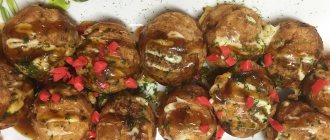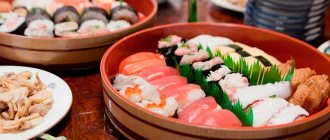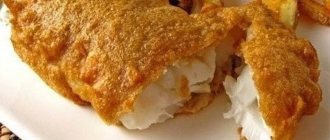Udon, soba, ramen, funchoza... In Japan, China and other countries in the region, noodles are no less popular than dishes based on rice and raw fish, which Russians already love. You can eat noodles in a restaurant or at a street eatery, order them at home, or even buy them from special vending machines. “Food for the mind, spirit and body,” as the Japanese call it, has long conquered the hearts and stomachs of fast food lovers in the USA and Europe. In Russia, noodle shops are just starting to become fashionable. Let's figure out what they feed in these exotic establishments.
A LITTLE HISTORY
Noodles as a food product have been known on Earth since very distant times. Representatives of the three most ancient civilizational cultures - Arabs, Italians and Chinese - still argue to this day about who invented noodles. Each of these ethnic groups claims authorship.
The most convincing arguments are provided by the Chinese. This is an archaeological find - a clay pot with the remains of noodles. It was discovered by Ye Maolin (Chinese: 叶茂林, pinyin Ye Maolin), a researcher at the Institute of Archeology of the Chinese Academy of Sciences (Chinese: 中国科学院, English: Chinese Academy of Sciences, CAS). This ancient artifact was found during excavations of the ancient settlement of Lajia (Chinese: 喇家, pinyin Lajia), destroyed by an earthquake, which is located in the upper reaches of the Yellow River, in Minhe County (Chinese: 民和, pinyin Minhe) of Haidong Prefecture (Chinese: Chinese translation 海东, pinyin Haidong) in Qinghai Province (Chinese translation 青海, pinyin Qinghai). This happened on October 14, 2002. The age of this item is more than 4000 years.
The first written mentions of noodles in Chinese sources date back to the era of the second Han dynasty (Eastern Han: 25-220). In those days in the Middle Kingdom, given the hot climate, conditions were not conducive to long-term storage of products, especially perishable ones (refrigerators had not yet been invented in those days). And the lack of basic hygiene conditions when preparing food often caused gastrointestinal diseases, so boiled noodles were considered the safest food product. It was this nuance that allowed it to become the most widespread product.
Ramen vs Udon Noodles: Cooking Time
Dried ramen noodles are very easy to prepare.
It looks like this:
- First, boil 2½ cups of water in a saucepan.
- Then add the noodles and let them cook for 2 minutes.
- Once the noodles begin to soften, add the flavoring and stir thoroughly.
- Do not discard the cooking liquid as you will also lose flavor.
Alternatively, at this point you can throw the noodles into the pan and fry them with oil or your favorite sauce.
The same process can be used for udon noodles. Cooking time may depend on whether you are cooking semi-dry or dried udon.
For the latter, the cooking time can be up to 10-12 minutes. If you are serving the noodles hot, transfer them to a strainer and carefully drain the water through the pan.
THE ROLE OF NOODLES IN ASIAN CUISINE
In Southeast Asia, noodles are an extremely popular product. It is widely recognized by the Japanese, Koreans, and Thais. In the homeland of its inventors, China, this is the main dish along with rice. In the north of China they eat more noodles, with noticeably less rice, and in the south it’s the other way around. By the way, in China it is noodles that symbolize longevity, so they are not broken during cooking. In Chinese national cuisine there is a dish made from wheat noodles, which is called “Longevity Noodles”, or Changshoumian (Chinese: 长寿面, pinyin Changshoumian). This dish is prepared for a birthday or wedding with wishes for a long life.
Noodles are prepared in various ways - boiled, fried, stewed, steamed, and added to soups. Ready-made noodles are consumed hot or cold. To taste, noodle dishes can be spicy, sweet, salty, sour.
How to prepare WOK noodles
According to the rules of a wok, all products used to prepare a dish must be finely chopped or chopped. After this, they are added one by one to a large frying pan over a hot fire, where they are fried, stirring constantly. Add food to the wok according to how long it takes to cook. The food that needs the least time to cook is added last. On average, a standard wok takes no more than 5-15 minutes to cook, depending on the ingredients. Sauces and seasonings are added according to the recipe.
NOODLES IN CHINESE CUISINE
There are a great many types of noodles produced in China. The Chinese people are very proud of their noodles. And first of all, different types of noodles differ in the composition of the raw materials from which they are made. It's either flour or starch. For example, there are people for whom gluten is contraindicated, so they should absolutely not eat noodles made from flour. It doesn’t matter - there are noodles made from starch, it does not contain gluten. Further, there are differences in additives to the main raw materials (for example, mushrooms). Well, the form factor of the noodles - it can be round or flat, thin or thick, wide or narrow.
Here are some of the most common types of Chinese noodles
:
- wheat noodles Udon (Chinese: 乌冬面, pinyin Wu Dong Mian) - it is made from wheat flour and water (wonton wrappers are made from the same dough);
- wheat noodles Ramen (Chinese: 拉面, pinyin Lamian) – these noodles are also made from wheat flour and alkaline mineral water, often chicken eggs are added to the dough;
- egg noodles (Chinese: 鸡蛋面, pinyin Jidan Mian) - made from wheat flour and chicken eggs;
- rice noodles (Chinese: 米线, pinyin Mixian) - this type has many varieties, it is made from rice flour, or rice starch, or from mixtures of rice flour with other ingredients and water;
- sweet potato noodles (Chinese: 红薯粉丝, pinyin Hongshu Fensi) - they are made from starch obtained from sweet potato (sweet potato) and water;
- funchose noodles (Chinese: 粉丝, pinyin Fensi) - this type of noodle, popular even in Russia, is also made from starch. High-quality types are made from mung bean, while cheaper ones are made from corn or sweet potato starch and water;
- mung bean noodles (Chinese: 绿豆面, pinyin Ludou mian) - made from mung bean (mung bean) starch and water;
- buckwheat noodles Soba (Chinese: 荞麦面, pinyin Qiaomaimian) - made from buckwheat starch and water.
And here are several types of noodles made from quite exotic types of flour in national Chinese cuisine:
- purple yam noodles (Chinese: 紫色红薯面条, pinyin Zise Hongshu Miantiao) - this type of noodle is very young, since purple yam began to be cultivated in China quite recently - in the mid-1990s, production is similar to sweet potato noodles - starch and water;
- fern root noodles (Chinese: 蕨根粉丝, pinyin Jue Gen Fensi) - this exotic product is also “young” - it appeared in the late 80s of the last century, it is made from starch obtained from dried fern roots and water ;
- konjac noodles (Chinese: 魔芋挂面, pinyin Moyu Guamian) - made from a mixture of wheat and konjac flour with the addition of water.
Ramen vs Udon Noodles: Uses
Udon is springy and doughy, making it a versatile noodle for cooking.
It is often served hot as a noodle soup, but its soft and chewy texture also makes it great for stir-frying.
Typical toppings that udon noodles come with include shallots, tempura, and aburaage (fried tofu).
You can also serve it cold with udon salad, fresh vegetables, eggs and shredded chicken. Pair it with shrimp or prawns and you have a variety of seafood udon dishes.
Ramen is also great as a soup or stir-fry. Mix it with eggs and you can make a ramen omelet or frittata.
You can even serve it chilled with fresh ingredients in a ramen salad or add cheese to make it an alternative to mac 'n' cheese.
Other toppings that go well with these versatile noodles include, but are not limited to, sliced pork, scallions, and nori (seaweed).
Read more about ramen here: Different types of Japanese ramen such as Shoyu and Shio.
NOODLES IN KOREAN CUISINE
Noodles are also popular among the neighbors of the Middle Kingdom. In Korean national cuisine, noodles (common name - kuksu) along with rice form the basis of the diet, except that more rice is consumed. It came to the Korean peninsula from China. By the way, the term “kuksu” refers not only to noodles—there is also a dish of the same name. This is a cold soup with boiled noodles, generously flavored with meat, egg and vegetable strips, cilantro, garlic and seasoned with soy sauce, vinegar and sesame oil. Guksu is one of the hallmarks of Korean cuisine, and there are many recipes for this soup. Every housewife will say that her soup is the best.
Wheat noodles were considered an expensive pleasure before World War II and only became widely available in the post-war period. Just like in neighboring China, noodles in Korea symbolize longevity.
The most popular traditional Korean noodle dishes are:
- Japchae, or Japchae (Korean: 잡채), literally means “mixed vegetables.” A variation on the famous Chinese dish Chow Mein. (Similar fried noodle dishes with many additives are probably found in all national cuisines of the Southeast Asian region). Japchae is a hearty dish made from starchy (yam or mung bean) noodles. The dish is cooked in a frying pan (wok) in very hot sesame oil. In addition to noodles, chopped vegetables (cabbage, carrots, peppers), mushrooms, egg strips, sauces and seasonings are added to it. Any Korean holiday table will definitely have this tasty and satisfying treat. Can be served either hot or cold;
- jangchi guksu (Korean: 잔치국수), or onmyeon (Korean: 온면) – boiled wheat noodles in hot anchovy broth (and you can add a piece of kelp seaweed) or in beef broth. The soup is seasoned with soy sauce, sesame oil, ground hot chili pepper, chopped green onions, fresh zucchini strips, fried egg, gim (seaweed leaf, as for sushi). This is a festive dish, prepared for important events, birthdays, weddings;
- naengmyeon (Korean: 냉면) – cold guksu noodle soup (memil guksu, i.e. buckwheat noodles), seasoned with soy sauce and mustard, with meat, vegetables and egg;
- bibim guksu (Korean: 비빔국수) is a cold dish made from thin wheat noodles, Seomyeon (Korean: 소면), similar to Japanese somen noodles. It is very popular in summer. In addition to the noodles, several thin slices of fried beef, pickled cucumbers and mushrooms are placed on the plate, seasoned with soy sauce, sesame oil, fried sesame seeds, and sugar. Cucumbers, mushrooms, a boiled egg are laid out around the mound of noodles; the dish may contain pickled radishes, Gim seaweed cut into strips;
- Kong guksu (Korean: 콩국수) is a seasonal cold wheat noodle dish seasoned with soy milk and soy sauce.
In Korean cuisine, there are three main types of noodles, their difference is in the composition of the raw materials. This:
- memil kuksu (Korean: 메밀국수) – buckwheat noodles (one might even say, an analogue of buckwheat Soba noodles). It is made from a mixture of buckwheat and wheat flour, starch and water;
- Danmyeon (Korean: 당면) - this type came to Korean cuisine from neighboring China, a complete analogue of the Chinese “brother” - funchose, prepared from mung bean starch, sweet potato or corn;
- Olchchengyi guksu (Korean: 올챙이국수) - these noodles are made from corn flour (there is a variety with acorn flour added).
And also less popular types:
- somen (Korean: 소면) - thin wheat noodles, similar to Japanese somen;
- Kamja guksu (Korean: 감자국수) is a variety made from a mixture of potato starch and rice flour.
And completely exotic species even for sophisticated Europeans:
- dotori guksu (Korean: 도토리국수) - original noodles made from acorn flour;
- chhilk guksu (Korean: 칡국수) - another unusual type of noodle, made from kudzu starch and buckwheat;
- ssukkal kuksu (Korean: 쑥칼국수) - the dough for this variety is prepared from a mixture of wormwood and wheat flour.
So simple and so different noodles
Soy and tapioca noodles, seaweed and yam noodles - even just listing the names would take many pages. It is interesting that in Asian countries, each establishment has an extremely narrow specialization: for example, only an udon noodle shop or a soba restaurant. This approach really makes sense, and each type of noodle is combined with hundreds of ingredients, so the menu will always be varied.
The main thing is high-quality products and professional equipment: practice shows that queues line up for delicious noodles not only in Japan, but in the countries of our region. The costs of opening a noodle outlet are minimal, but the profitability of such a business is very high. You can make noodles yourself - for this you will need at least a professional dough mixer, a dough sheeter and a noodle cutter. You will have to invest in equipment - but the cost of the product will decrease significantly, and all investments will pay off within a year maximum.
A noodle shop is a profitable business, but its organization must be approached wisely and carefully. First, find a suitable premises, calculate the costs of renting it, equipment and repairs, take into account staff salaries and other expenses. One of the most important points is a competent design for organizing the kitchen and dining area. If you need advice from experienced specialists who have participated in the opening of dozens of cafes, restaurants and retail businesses, call the hotline. We sell high-quality equipment at the best prices in Moscow, we deal with design and connection, as well as staff training and technical maintenance.
How do you eat ramen?
The Japanese are very careful about observing all the required rituals , including culinary ones. For them, food is a real cultural rite. Despite the fact that ramen is a fairly young dish, there are still certain rules for its consumption in Japan:
- Ramen soup is served in wide bowls, with a wide spoon for broth and chopsticks. Spices and sauces are served separately.
- Ramen is eaten immediately after cooking, until the noodles and other ingredients have lost their original taste and are not too soft. They always start with the noodles, then move on to the remaining ingredients, and lastly drink the broth (or eat it with a spoon).
- The Japanese eat quickly, without being distracted by other things, until the bowl of soup is completely empty. And if at the same time you eat noisily and with appetite, then this will be the best reward for the cook - the Japanese always show their pleasure from food.
Somen
Thin, very smooth somen noodles are reminiscent of Italian spaghetti. It is most often made from wheat flour with water and salt, but there are also regional variations made from rice and beans. Somen with all kinds of broths is a popular Japanese fast food. The choice of broth - meat, mushroom, chicken or miso - directly determines the final taste of the dish. The noodles are served separately from the side dish and broth; in this case, you need to pour the side dish into a bowl with broth, season with soy sauce, and then dip somen in it.
RECIPE Ramen soup with tofu tempura
Pho bo: beef in web of rice
The Vietnamese soup with beef and rice noodles, pho bo, has also gained popularity all over the world. The history of the dish goes back 150 years, and its homeland is considered to be the town of Nam Dinh, 100 km from Hanoi. It is not known for certain who invented pho bo. But it was then that street food vendors began offering it to passers-by. They had two boxes with them. A fryer with broth was placed in one so that it was always hot. The other contained ready-made meat, fresh herbs, noodles and a variety of spices.
Unlike lagman, pho bo uses thin rice noodles. Moreover, they cut it from special steamed pancakes. To create a unique taste, rice vinegar, chili sauce, fish sauce and lime wedges are added to the soup, as well as a generous bouquet of various spices. Meat can be not only boiled, but also raw. To do this, fresh frozen beef is cut into thin slices and steamed with strong broth.
We also start preparing pho bo with beef broth. Pour 400 g of beef on the bone and 200 g of beef pulp with 2 liters of cold water, cook for 1.5–2 hours, constantly skimming off the foam. At the end, we strain the broth, separate the meat from the bone and disassemble it into fibers. Cut the boiled beef into large slices.
In a cast-iron frying pan without oil, fry a cinnamon stick, star anise, 2-3 dried cardamom fruits, 0.5 tsp each. coriander and ginger, 2-3 black peppercorns. Add spices to the already strained broth, pour in the chili pepper rings and simmer over low heat for 5 minutes. Meanwhile, boil 400 g of rice noodles and rinse in cold water to prevent them from sticking.
Place the meat in a bowl, fill it with spicy broth, and add noodles. Decorate the dish with parsley sprigs, mint leaves and a slice of lemon. Green and red onions, basil, cilantro, wild garlic and fish sauce are also often used for serving.









